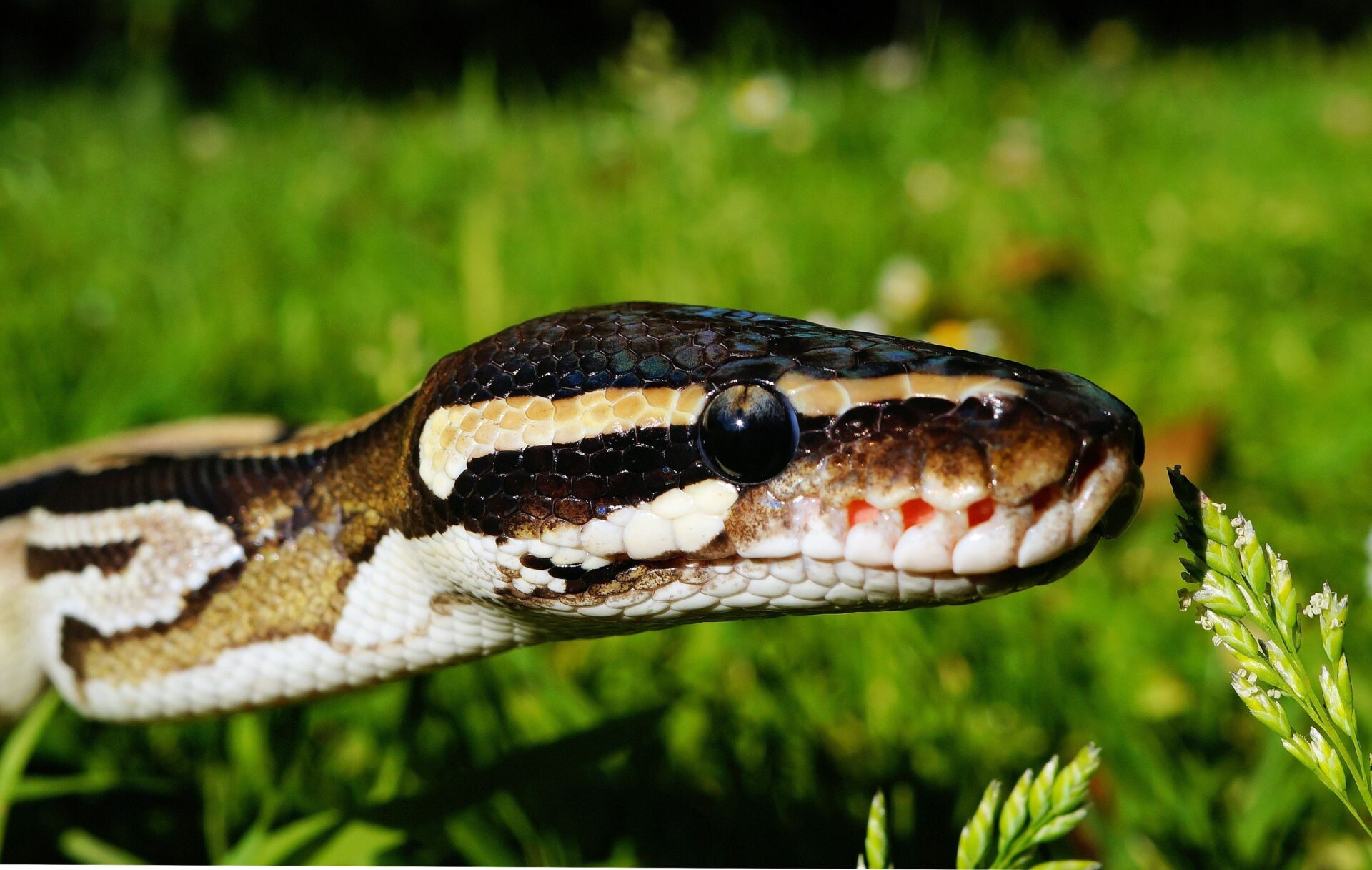Ball Pythons are one of the most popular pet snakes in the world and they are known for their docile nature and ease of care. But one question that is often asked by potential owners is: How long do Ball Pythons grow? The answer is that Ball Pythons can reach lengths of up to 6 feet, although there are some exceptions. They typically take around 3 to 5 years to reach their full adult size. In this article, we will discuss the growth rate and size of Ball Pythons, as well as how to tell if your snake is growing properly.Ball Pythons typically reach an adult size of between 3 to 5 feet in length.
Average Size and Lifespan of Ball Pythons
Ball pythons, also known as royal pythons, are a small species of python native to Africa. They typically measure between 3-5 feet (91-152 cm) in length and can weigh up to 3-5 pounds (1.4-2.3 kg). The average lifespan for a ball python is between 20 and 30 years, although some have been known to live up to 40 years in captivity. The size of a ball python will depend on its age, health, and environmental conditions.
Ball pythons are considered ideal pets for first-time snake owners due to their manageable size and generally docile nature. They can be easily handled and require minimal upkeep compared to other types of snakes. Ball pythons can live in tanks as small as 10 or 20 gallons, as long as the temperature is kept within their preferred range of 75-85°F (24-30°C).
In the wild, ball pythons are found primarily in grasslands and savannahs of West Africa. They have also been introduced to parts of East Africa and Central Africa due to their popularity as pets. In the wild they feed mainly on small rodents such as mice, rats, gerbils, shrews, moles and voles. In captivity they will usually eat frozen mice or rats that have been thawed out prior to feeding.
Overall, ball pythons make excellent pets for those who are looking for a reptile with a manageable size and relatively low maintenance needs. With proper care they can live up to 40 years in captivity!
Temperature
Temperature is one of the most important factors in determining the growth rate of ball pythons. The ideal temperature for ball pythons is between 75 and 85 degrees Fahrenheit. If the temperature is too cold, it can slow down or even stop the growth of your ball python. On the other hand, if it is too hot, it can cause health problems and even death. To ensure that your ball python grows at a healthy rate, always maintain a constant temperature in its enclosure.
Humidity
Humidity is also an important factor in the growth of ball pythons. Ball pythons prefer high levels of humidity, around 60-70%. If the humidity is too low, your ball python can become dehydrated and have difficulty digesting its food. On the other hand, if the humidity is too high, it can lead to respiratory infections and other health issues. As with temperature, make sure to monitor and adjust the humidity levels in your pet’s enclosure to ensure optimal growth.
Diet
A proper diet is essential for any reptile species, including ball pythons. These snakes require a balanced diet consisting of rodents such as mice or rats. It’s important to feed them a variety of different sizes so they get all the nutrients they need for proper growth. Feeding them too much or not enough food can both negatively affect their growth rate.
Exercise
In addition to providing a balanced diet and maintaining an appropriate environment for your pet snake, providing exercise opportunities can also help promote faster growth rates. Ball pythons should be given plenty of opportunities to move around in their enclosure each day so they can stay active and healthy. This will help keep them from becoming overweight or malnourished.
Genetics
The last factor that affects the growth rate of ball pythons is genetics. Different snake species have different genetic predispositions towards size and weight gain, so while some may grow faster than others due to environmental factors like diet and exercise, genetics will ultimately play a role in how quickly your pet snake grows up.
Keeping a Ball Python as a Pet
Ball pythons are a popular pet choice, particularly for those looking for a snake that is relatively easy to care for. They are also known as royal pythons and typically have docile temperaments. If you’re considering keeping a ball python, there are several important things to keep in mind.
Choosing the Right Snake
When purchasing a ball python, it’s important to select one from a reputable seller. Make sure the snake appears healthy and is not overly thin or lethargic. It should also be in an enclosure of appropriate size with clean water and an appropriate substrate such as newspaper or aspen shavings.
Providing Proper Housing
Ball pythons need an appropriately-sized enclosure that is secure and escape-proof. glass aquariums work well, but make sure they have secure lids that can be locked shut if necessary. The enclosure should be large enough for the snake to move around easily and should include hiding spots such as rocks or hollow logs. The temperature of the enclosure should be maintained between 78-80 degrees Fahrenheit with a basking spot of 88-90 degrees Fahrenheit on one side of the tank. A quality heat lamp can be used to maintain these temperatures, while also providing heat gradients throughout the tank that allow for thermoregulation by your pet snake.
Feeding Your Ball Python
Ball pythons typically feed on mice and rats in captivity, although occasionally they may take frogs or lizards as well. It’s important to feed your snake pre-killed prey items rather than live food, since live food can injure your pet reptile with its sharp claws or teeth. Feed your ball python every 7-10 days depending on its size, removing any uneaten prey items after 24 hours since they may harbor bacteria and parasites that could harm your pet snake.
Cleaning & Maintenance
It’s important to clean your ball python’s enclosure regularly to reduce odor and bacteria buildup that could harm your pet reptile’s health over time. Spot cleaning daily is necessary, while thorough cleaning once per week should also be done using warm water and reptile-safe disinfectants such as vinegar or diluted bleach solutions (1 part bleach : 10 parts water). When handling your ball python, it’s best to gently scoop them up rather than grab them quickly since this can startle them and lead to defensive behavior such as striking out with their mouth open or coiling around their handler in defense mode. As long as you handle them gently and keep their environment clean and safe, you can look forward to many years of enjoyment with your new pet ball python!
Differences in Size Between Male and Female Ball Pythons
Ball pythons are a species of snake that have become popular pets in recent years due to their relatively small size. While males and females of the species are generally similar, there are some notable differences in size between the two genders. Male ball pythons tend to be larger than females, with an average length of around 3-4 feet compared to the female’s average length of 2-3 feet. Additionally, males tend to weigh slightly more than females, with an average weight of 2-3 kg compared to the female’s average weight of 1-2 kg.
The difference in size between male and female ball pythons is largely due to the fact that males reach maturity at a larger size than females do. This is common among many species, as males typically need more resources to reach reproductive maturity. As a result, adult males tend to be larger than adult females, though this is not always the case for juveniles.
It’s important for potential owners of ball pythons to understand the differences in size between male and female snakes before making a purchase. This can help them choose a specimen that is best suited for their space and experience level as a pet owner. Additionally, it’s essential for owners to provide adequate living space for their pet snake regardless of its gender or size.

Ensuring Proper Care for Your Ball Python
Taking on the responsibility of a pet is something that should not be taken lightly. If you are considering getting a ball python, it is important that you take the necessary steps to ensure that your pet is properly taken care of. This includes providing them with the proper environment, food, and medical care.
When it comes to setting up their enclosure, make sure that you have the right size for your python. They should have enough space to move around and explore, as well as have hiding spots and other furniture inside their terrarium. The temperature and humidity levels should also be monitored and adjusted where necessary.
In terms of feeding your ball python, they require a diet of mice or rats depending on their size. It is important to make sure that their meals are appropriately sized for them so they can easily digest it without any problems. They should also not be overfed as this can lead to health problems down the line. You may want to consider providing your python with a variety of frozen or live prey options in order to keep them interested in their meals.
Finally, make sure that your ball python has access to proper veterinary care when needed. This includes regular check-ups and any necessary treatments or vaccinations if needed. It is also important to keep an eye out for signs of illness such as lack of appetite or changes in behavior so they can be addressed promptly by a qualified veterinarian if necessary.
By taking the time to properly take care of your ball python, you can ensure that they remain happy and healthy for years to come!
Feeding Requirements for Healthy Growth in Ball Pythons
Ball pythons are one of the most popular pet snakes in the world. They are relatively easy to care for and make great pets for adults and children alike. However, providing the correct diet is essential for your ball python’s health and growth. It is important to understand their nutritional needs so you can ensure they get the proper nutrition they need to stay healthy and happy.
Ball pythons should be fed a diet of live rodents, such as mice or rats, depending on their size. The size of prey should be no wider than the widest part of your ball python’s body. Prey should be offered at least once or twice a week but it is recommended to feed every five to seven days. It is important to not overfeed your ball python as this can lead to obesity and other health problems.
In addition to live prey, you can also offer your ball python pre-killed rodents or frozen/thawed rodents. These alternatives are ideal if you do not want to deal with live prey or if you want to vary your snake’s diet. Before offering these options, make sure that they have been properly thawed and warmed up as cold food can cause digestive issues in snakes.
It is important to provide calcium supplements with every meal as this helps them maintain strong bones and muscles. Calcium can be found in most reptile vitamins or calcium powder which can be sprinkled on their food before feeding them.
By understanding the nutritional needs of your ball python, you will be able to ensure they get all the nutrients they need for healthy growth and development. Feeding them a varied diet that includes both live prey and pre-killed/frozen food, as well as calcium supplements will help keep them healthy and happy for many years!
Providing Adequate Housing for Your Pet Ball Python
Owning a pet ball python is both a rewarding and challenging experience. It is important to ensure that you are providing your python with suitable housing that meets its needs. The enclosure should be big enough for your python to move around comfortably and also provide adequate temperature and humidity levels.
The enclosure should be large enough to accommodate your ball python’s size. A single adult should have an enclosure measuring at least 36″ x 18″ x 18″. This will give them plenty of room to move around and explore, as well as providing them with the opportunity to thermoregulate. If you have multiple pythons, they will need an even larger enclosure.
The enclosure should also provide adequate temperature and humidity levels for your pet ball python. Temperature should range from 78-82°F during the day, with a basking spot of 88-90°F, and no lower than 75°F at night. Humidity should be kept between 50-60%. You can achieve this by misting the enclosure twice daily with a water bottle and using a hygrometer to monitor the levels.
When it comes to substrate, it is best to avoid sand or any other loose substrates as these can cause impaction if ingested by your python while they are feeding or exploring their enclosure. Alternatively, paper towels or newspaper are ideal substrates as they are easy to clean and sanitize regularly.
Your pet ball python will also need places to hide in its enclosure so it feels safe and secure. This can be achieved by providing artificial plants or hides that can be purchased from most pet stores, or using natural materials such as wood branches or rocks from outside sources (ensuring they are free from chemicals first).
Finally, make sure the lid on the enclosure is secure so your python cannot escape! It is also important that any small gaps in the lid are covered with mesh or netting so no other animals can get in – this includes cats or mice!

Conclusion
Ball pythons are a great snake to keep as pets due to their docile nature and relatively small size. They can grow up to 5 feet in length, but some may remain smaller depending on their environment and diet. If you’re looking for a pet snake, ball pythons are an excellent choice, as they require minimal maintenance and provide long-lasting companionship.
When properly cared for, ball pythons can live up to 30 years of age, so it is important that owners understand how long these snakes can grow in order to provide the appropriate habitat and nutrition. With proper care, ball pythons can be enjoyed for many years by both experienced and novice snake owners alike.




